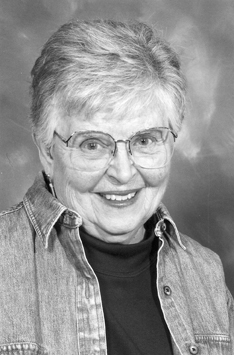Rabbitbrush Rambler: Honoring San Juan

In the San Luis Valley, we have few place names honoring San Juan, whether the mountains or the saint. Maybe that is because the enormous mountain range to our west has simply been taken for granted, like a big bump to get around, through, or over on the way to making and spending money or having some fun and enjoying the awesome scenery.
Here and there we have a few streets and businesses with the name, as does a church in the Horca subdivision in Conejos Canyon, and a ghost town called San Juan City once existed, serving travelers across Stone Pass to the San Juan mines. The mountains are the main point of interest, not the saint.
Originally, Mexico’s maps showed the range as the northern end of the Sierra Madre, but later the San Juan’s name appeared on maps at the southern end of the Rocky Mountains. Whatever the name, this gorgeous range is Colorado’s largest, running from south of the Sawatch Range on the north to New Mexico’s Chama River on the south and extending all the way to Telluride on the west. It even has some sub-segments like the La Garita and Elk Mountains.
The naming of the range is a result of the arrival of Spanish conquistadores and padres. San Juan Bautista (Saint John the Baptist) was their patron saint, along with most of Spain and Central and South America. When the newcomers arrived near the old Tewa pueblo called Ohkay Owingeh at the confluence of the Rio Grande and Chama Rivers, they thanked their patron saint, San Juan Bautista, and gave Ohkay a new name, San Juan Pueblo.
From there they explored farther, bestowing as they went the title on the vast heap of mountains to the north and northwest and its various parts. The San Juan River lies way over on the Western Slope, and when federal and state government got organized, a county and a national forest received the name without devoting much thought to the namesake, San Juan Bautista, one suspects.
All this carping beings me at last to one landmark with a San Juan name that is within the San Luis Valley and has received public honor for the saint. It is La Capilla de San Juan Bautista, which is listed in the National Register of Historic Places. It is located near the mouth of Carnero Canyon in Saguache County.
This story begins when the Valley had one Guadalupe Parish with its headquarters of Conejos. As farms and sheep flocks, plaza and towns spread north through the Valley, the San Juan Bautista Parish was established with its headquarters being near today’s hamlet called La Garita. This parish’s priests served the far-flung people of the northern half of the Valley and even across the Divide to San Juan mines for a short time.
In 1879 the parish’s chapel at La Garita was dedicated, and Sisters of Loretto taught school. A high point each June was the celebration of the San Juan feast day, with the festival beginning on the previous day.
In 1895 the headquarters moved to the town of Del Norte and later to Monte Vista, leaving the original site high and dry, so to speak, but worship services continued at La Garita. A fire destroyed the church building in 1924, and the one we see today was built in 1926 with different architecture.
This is the structure that is in the National Register. And, incidentally, it is pictured in my history of the San Luis Valley with a subtitle referring to its six-armed cross.
After this building ceased to be used for worship services, although it still was owned by the diocese in Pueblo, it was occupied for a few years by Artes del Valle, a cooperative craft workshop and then again became idle. But a few years ago parishioners undertook a project on the surrounding land that has become a beautiful destination for prayer and medication, called the San Juan Catholic Spiritual Center.
On June 24 at 10 a.m., on the Feast Day of San Juan, a Mass will be held in the historic church, with a potluck following. So, San Juan Bautista assuredly has not been forgotten in the San Luis Valley, and I hope that he has not forgotten us.



